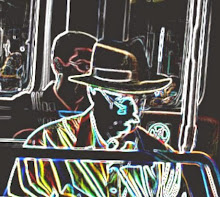Some lessons are best understood physically ...
Long ago I acquired a simple set of bookshelves. Why? Because back then the only available book formats were "hard" or "soft," not digital, so those of us who read were constantly filling up our living space with hundreds of examples of both, and always running out of space to store them. OK, my house is still like that, but I can see my physical books beginning to follow my music collection into the cloud.
At the time I considered these shelves cheap and nearly disposable. They were plain, unfinished pine boards, carelessly joined together, with a back of thin plywood. But compared to furnishings available now they are a masterpiece of fine cabinetry. Don't talk to me about Ikea. Just try to find something that is actually solid wood, not particle board covered in plastic. And if the backing isn't Masonite it will be even less substantial cardboard -- with a wood-grain paper face. Not wood, but a picture of wood. By contrast these pine shelves were actually joined using grooves cut in the side pieces, not those annoying little metal studs that seem to be universal now.
Moral Lesson No. 1: You don't know what you've got until time has gone by.
I coated the bare wood with a couple of coats of urethane varnish, and made a fateful decision to improve the attachment of the plywood back piece. Why fateful? Read on. I wasn't happy with the way it had been stuck on with staples. It was loose in places and felt flimsy. So I added some carpenters glue and additional nails to make it more solid.
For years the resulting piece served me faithfully, supporting the hefty weight of some portion of my library. The collection grew to occupy several additional bookcases until finally, because it no longer matched the decor, my lowly pine shelves were banished to the pantry and the more menial duty of supporting the bric-a-brac of contemporary kitchens -- chopping and mixing appliances, crock pots, garbage bags and the like.
Also on the shelves were some hurricane supplies, including (until recently) four gallon containers of water. It turns out these cheap polyethylene jugs are not really designed for long term storage. Having survived unneeded through one hurricane season, they were still standing by when one of them sprung a leak. The resulting small flood -- it's remarkable how much larger a gallon looks when spread flat over a large area -- soaked the bottom of the shelves and whatever items had been stored lower down.
Moral Lesson No. 2: Always do disaster planning.
As I worked, in the back of my mind I heard a voice that I wished had been there at the beginning. You don't want to attach that so permanently, this experienced old carpenter would have counseled me. Those staples are there so when the day comes you want to remove or replace it, it will just pop right off. But that guy wasn't there when I needed him.
Moral Lesson No. 3: Plan for the future, because that day will come.
Once I had an entirely opposite, more cheerful carpentry experience. It happened when a friend gave me this wonderful old radio from the 1930s. No, it didn't work. Many years ago it had suffered some catastrophic component failure with the result that a transformer inside it had melted all over the chassis. It used vacuum tubes, of course, and most of them were missing, with an extremely low probability of being able to be replaced.
I decided it would make a great speaker cabinet. In spite of the symmetrical cabinet design it had only a single speaker on one side (with a torn cone), but with the innards out of the way there was plenty of room to mount two of them for stereo. I picked up a couple of 5-inch full range car speakers from Radio Shack and prepared to mount them.
The side that already had a speaker was easy. All I had to do was unscrew the old one from the piece of plywood it was attached to, then screw in the new one. But the plywood on the other side was solid because there had never been a speaker there. No big deal, I just had to unscrew the plywood (note that it was not GLUED in place) and cut an opening in it.
Imagine my surprise when I discovered the other side of the plywood was already marked in pencil for the cutout! We can only assume that it was easier to tell some helper in the factory to mark all the wood pieces, but then to only cut the ones that would have speakers attached. Maybe there was a deluxe model of the same radio that did have speakers on both sides. That would certainly be in line with American patterns of efficiency and consumer marketing. Or maybe the guy in the factory just figured that some hobbyist might want to add another speaker some day, not even imagining such a thing as "stereo" sound.
At any rate I experienced the great joy of applying my coping saw and following the outline that had been drawn on the wood for me by a nameless craftsman over 60 years in the past, someone who really and truly planned ahead. It just doesn't get any better than that.
And by the way, you wouldn't believe the sound that comes out of this simple unsealed enclosure. With the speakers pointing in opposite directions the sound reflects off the walls in a spacious and non-localized way, while the central location acts like a center channel speaker to fill in the gap between left and right. Maybe those guys back in the '30s knew something about acoustics, too.










No comments:
Post a Comment